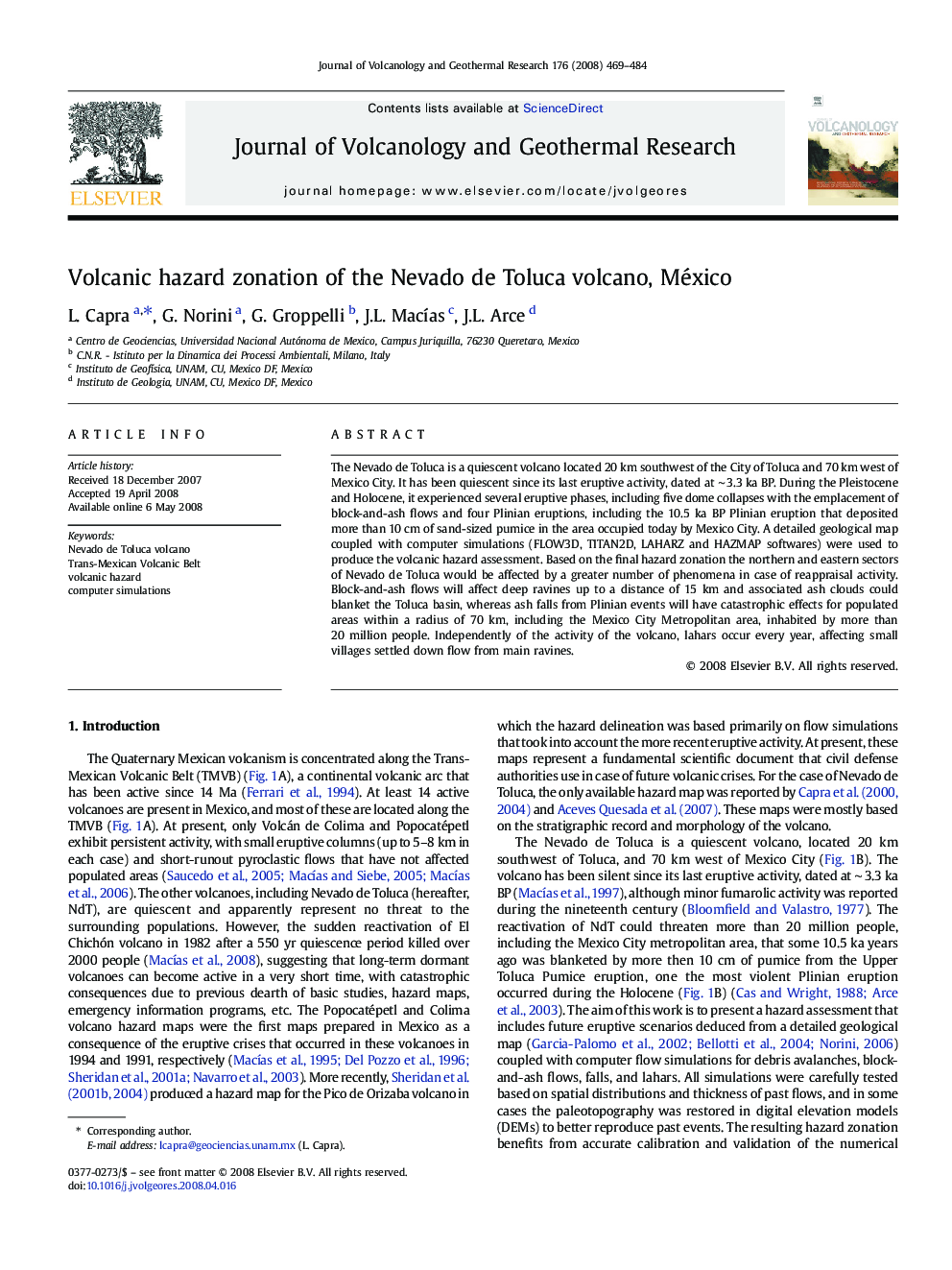| Article ID | Journal | Published Year | Pages | File Type |
|---|---|---|---|---|
| 4713547 | Journal of Volcanology and Geothermal Research | 2008 | 16 Pages |
The Nevado de Toluca is a quiescent volcano located 20 km southwest of the City of Toluca and 70 km west of Mexico City. It has been quiescent since its last eruptive activity, dated at ∼ 3.3 ka BP. During the Pleistocene and Holocene, it experienced several eruptive phases, including five dome collapses with the emplacement of block-and-ash flows and four Plinian eruptions, including the 10.5 ka BP Plinian eruption that deposited more than 10 cm of sand-sized pumice in the area occupied today by Mexico City. A detailed geological map coupled with computer simulations (FLOW3D, TITAN2D, LAHARZ and HAZMAP softwares) were used to produce the volcanic hazard assessment. Based on the final hazard zonation the northern and eastern sectors of Nevado de Toluca would be affected by a greater number of phenomena in case of reappraisal activity. Block-and-ash flows will affect deep ravines up to a distance of 15 km and associated ash clouds could blanket the Toluca basin, whereas ash falls from Plinian events will have catastrophic effects for populated areas within a radius of 70 km, including the Mexico City Metropolitan area, inhabited by more than 20 million people. Independently of the activity of the volcano, lahars occur every year, affecting small villages settled down flow from main ravines.
